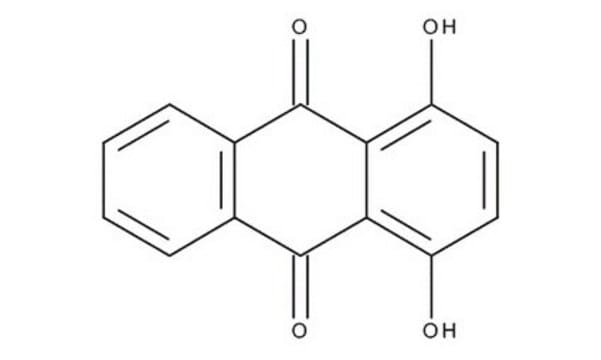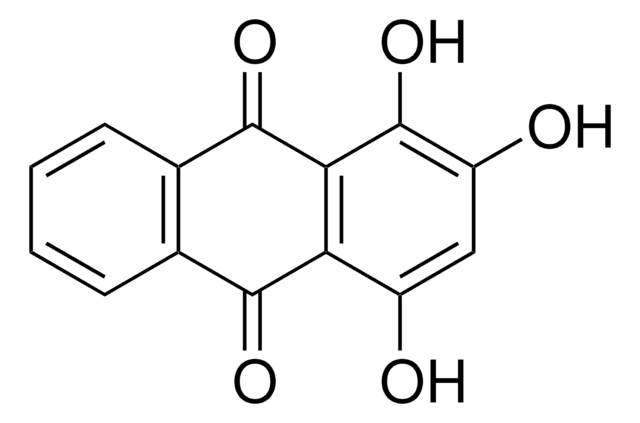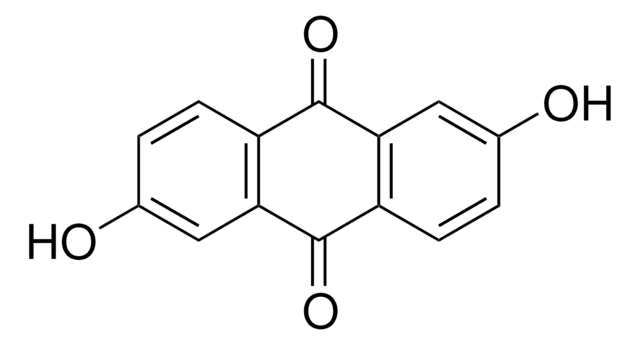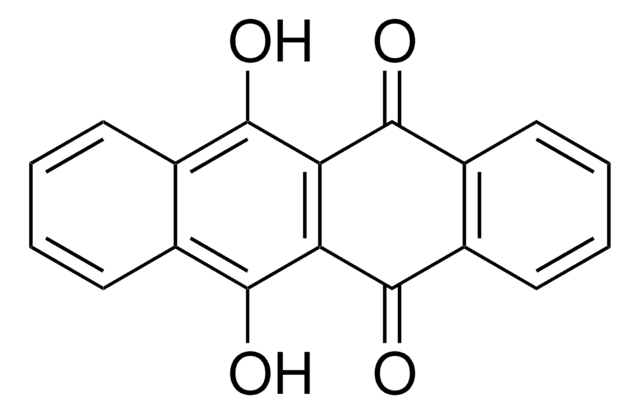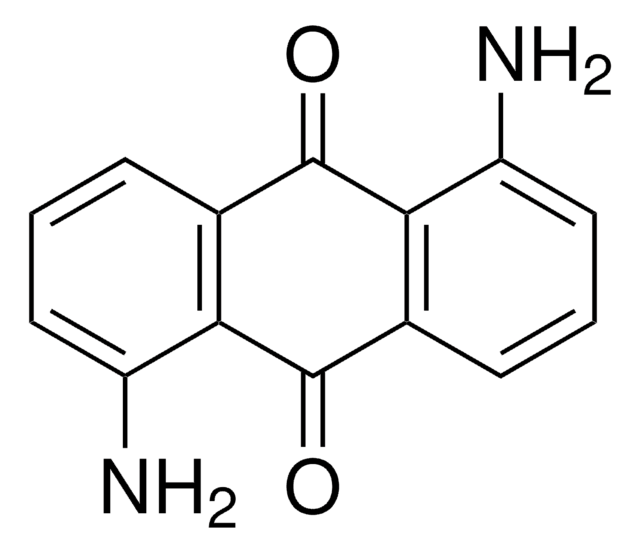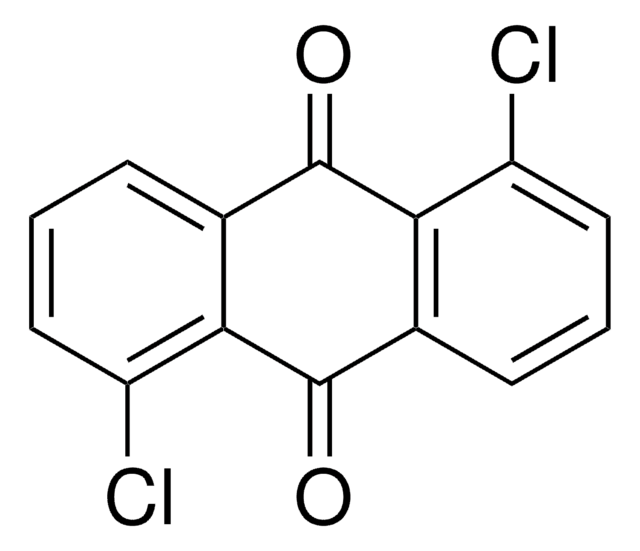Q906
Quinizarin
96%
Synonym(s):
1,4-Dihydroxyanthraquinone
Sign Into View Organizational & Contract Pricing
All Photos(1)
About This Item
Empirical Formula (Hill Notation):
C14H8O4
CAS Number:
Molecular Weight:
240.21
Beilstein/REAXYS Number:
1914036
EC Number:
MDL number:
UNSPSC Code:
12352103
PubChem Substance ID:
NACRES:
NA.23
Recommended Products
vapor density
8.3 (vs air)
vapor pressure
1 mmHg ( 196.7 °C)
assay
96%
mp
198-199 °C (lit.)
SMILES string
Oc1ccc(O)c2C(=O)c3ccccc3C(=O)c12
InChI
1S/C14H8O4/c15-9-5-6-10(16)12-11(9)13(17)7-3-1-2-4-8(7)14(12)18/h1-6,15-16H
InChI key
GUEIZVNYDFNHJU-UHFFFAOYSA-N
Certificates of Analysis (COA)
Search for Certificates of Analysis (COA) by entering the products Lot/Batch Number. Lot and Batch Numbers can be found on a product’s label following the words ‘Lot’ or ‘Batch’.
Already Own This Product?
Find documentation for the products that you have recently purchased in the Document Library.
Customers Also Viewed
Andrzej Blachecki et al.
Chemphyschem : a European journal of chemical physics and physical chemistry, 18(13), 1798-1810 (2017-04-28)
Titanium dioxide nanocomposites were synthesized in hierarchical architectures through the use of a 1,4-dihydroxyanthraquinone photosensitizer. In the first step, the dye was either incorporated into the TiO
T S Koch et al.
Biophysical chemistry, 36(3), 187-199 (1990-08-15)
The visible absorption spectra of 1,4-(dihydroxy)-9,10-anthraquinone and of Co(II), Ni(II), Cu(II) and Zn(II) chelates have been studied in different organic solvents. This system provides a model for the anthracycline antibiotics and their metal chelates. The band structure of the spectrum
Kunihiko Ishii et al.
The Journal of chemical physics, 131(4), 044512-044512 (2009-08-07)
We have studied IR-induced low-frequency coherent vibration of an intramolecularly hydrogen-bonded molecule, quinizarin, by an ultrashort IR-pump-visible-probe spectroscopy with approximately 60 fs time resolution. In this experiment, the IR excitation of the symmetric OH-stretching mode induced a low-frequency vibrational coherence
Meiling Wang et al.
Environmental science & technology, 46(1), 367-373 (2011-12-02)
1,4-Dihydroxyanthraquinone (1,4-DHAQ, a fluorophore) doped cellulose (CL) (denoted as 1,4-DHAQ@CL) microporous nanofiber film has been achieved via simple electrospinning and subsequent deacetylating, and used for highly sensitive and selective fluorescence detection of Cu(2+) in aqueous solution. As the resultant byproduct
Mohammad Saeid Hosseini et al.
Journal of hazardous materials, 190(1-3), 755-765 (2011-05-03)
This paper reports the results obtained by studying the ion-exchange properties of a new solvent impregnated resin (SIR), which was prepared by impregnation of quinizarin (1,4-dihydroxyanthraquinone, QNZ) on Amberlite XAD-16 after nitration of the benzene rings present in its structure.
Our team of scientists has experience in all areas of research including Life Science, Material Science, Chemical Synthesis, Chromatography, Analytical and many others.
Contact Technical Service